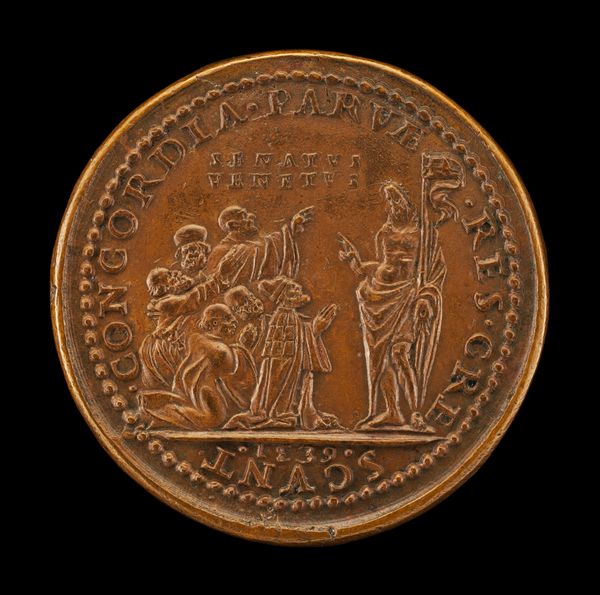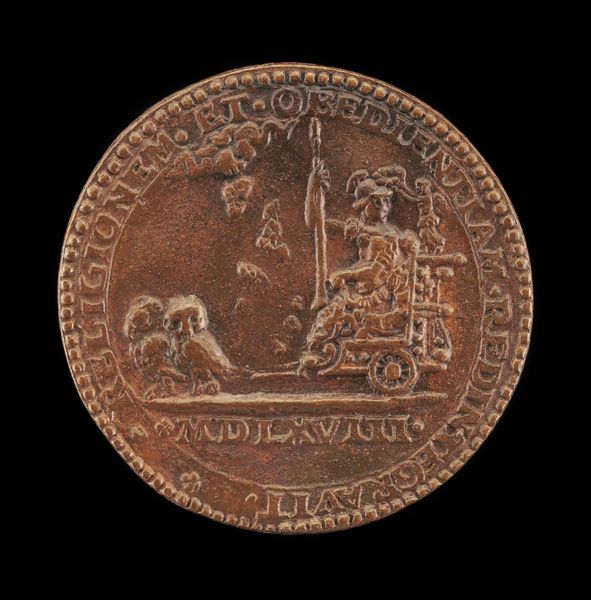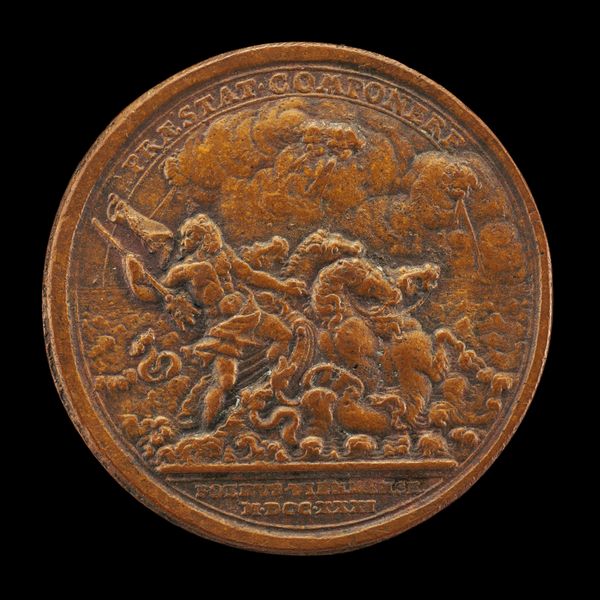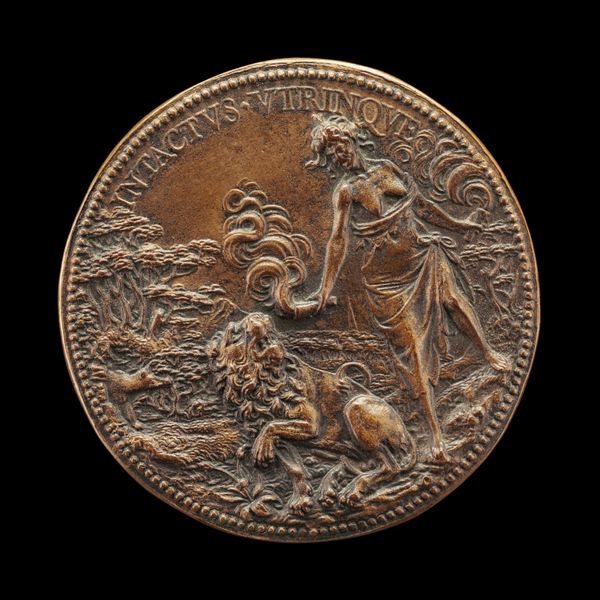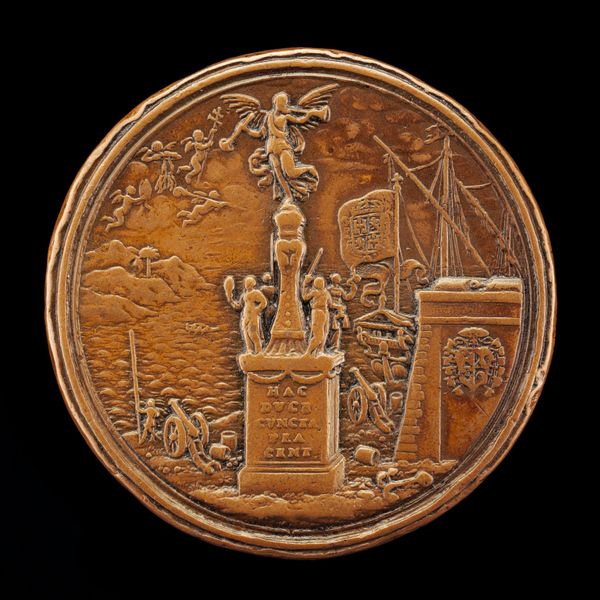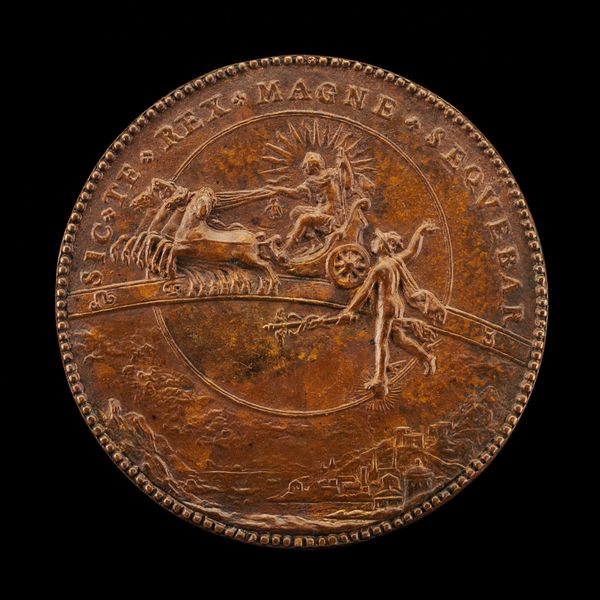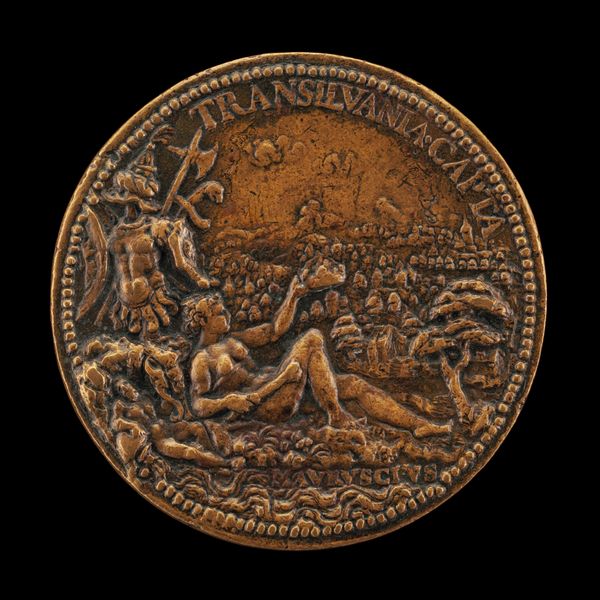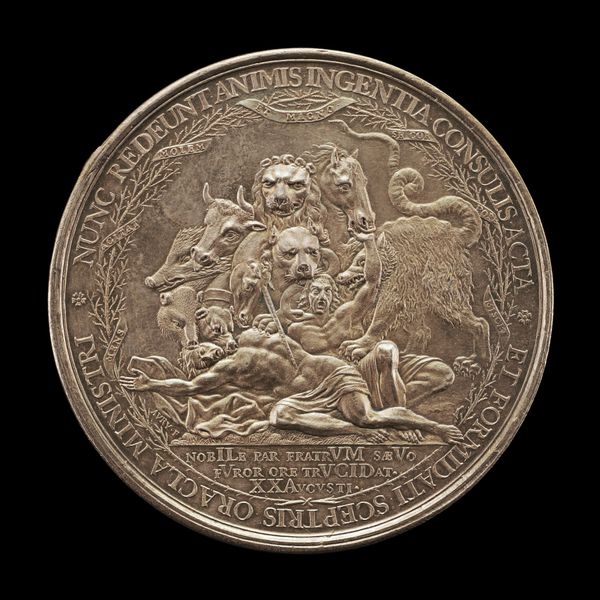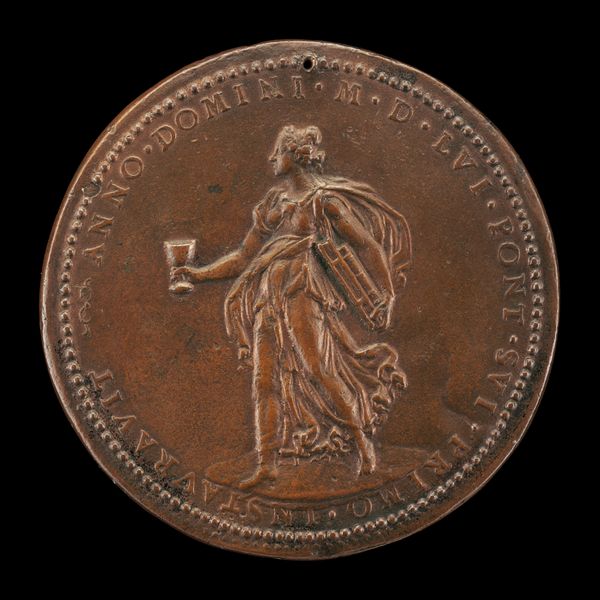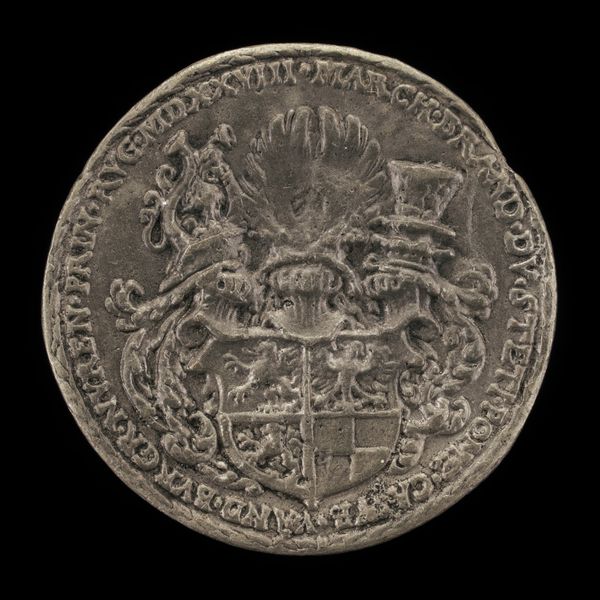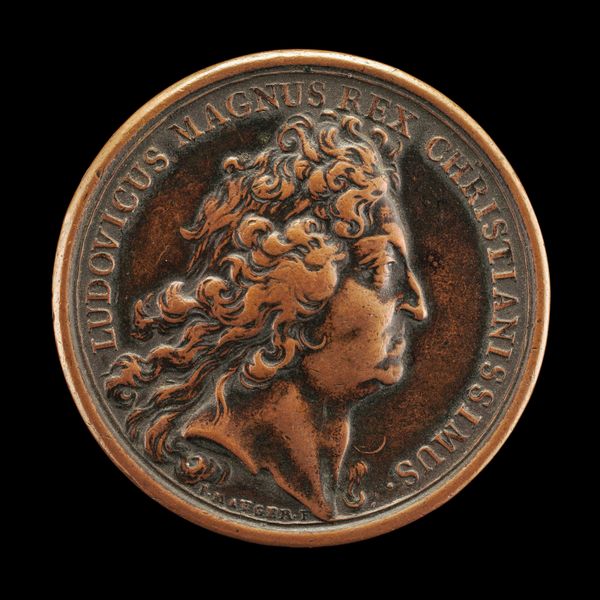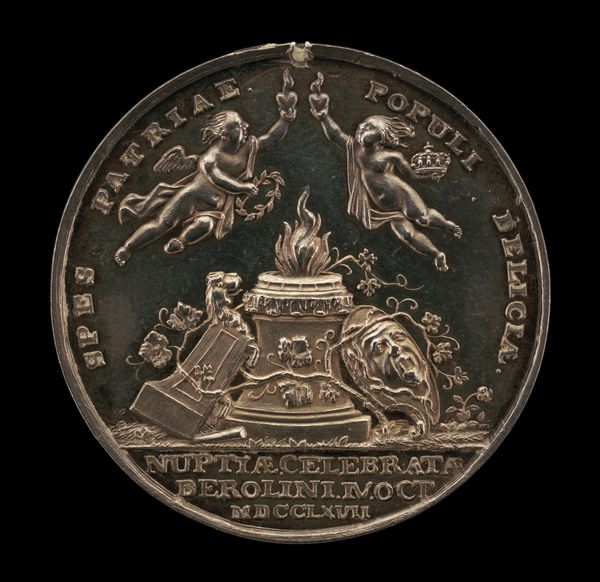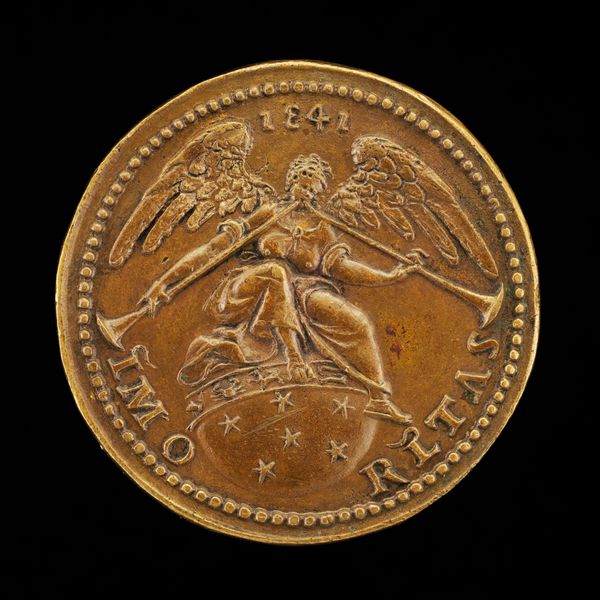![Seated Figure of Venice Holding Cornucopiae and Scales [reverse] by Andrea Spinelli](/_next/image?url=https%3A%2F%2Fd2w8kbdekdi1gv.cloudfront.net%2FeyJidWNrZXQiOiAiYXJ0ZXJhLWltYWdlcy1idWNrZXQiLCAia2V5IjogImFydHdvcmtzLzgxMWNiNjM5LTBjMmItNDVhZi05ZmMzLWNkNGUwMWMzYTRiOC84MTFjYjYzOS0wYzJiLTQ1YWYtOWZjMy1jZDRlMDFjM2E0YjhfZnVsbC5qcGciLCAiZWRpdHMiOiB7InJlc2l6ZSI6IHsid2lkdGgiOiAxOTIwLCAiaGVpZ2h0IjogMTkyMCwgImZpdCI6ICJpbnNpZGUifX19&w=3840&q=75)
Seated Figure of Venice Holding Cornucopiae and Scales [reverse] 1539
0:00
0:00
carving, metal, relief, bronze, sculpture
#
portrait
#
medal
#
carving
#
allegory
#
metal
#
stone
#
sculpture
#
relief
#
bronze
#
mannerism
#
sculpture
#
carved
Dimensions: overall (diameter): 4.1 cm (1 5/8 in.) gross weight: 32.89 gr (0.073 lb.) axis: 6:00
Copyright: National Gallery of Art: CC0 1.0
Editor: So, this is a bronze medal from 1539 by Andrea Spinelli, titled "Seated Figure of Venice Holding Cornucopiae and Scales [reverse]". It's so detailed, especially considering its size. I’m struck by the allegorical figure; it seems so intentional. How do you interpret this work in relation to Venice at that time? Curator: The image speaks volumes about Venice's self-perception and ambitions in the 16th century. Spinelli presents Venice as a powerful, divinely ordained entity through the allegorical figure and the accompanying symbols of justice, abundance, and military might. Notice how Venice is both a queen (‘ADRIACI REGINA’) and divinely linked to the sea (‘AND'EI MARI SUPREMUM’). Where do you think that positioning comes from, considering the historic and social context? Editor: Maybe it's because Venice saw itself as a major power in the Adriatic? This medal feels like a declaration. Curator: Precisely. And beyond a mere declaration, it's a projection of power and legitimacy during a time when Venice was vying for influence and control in the Mediterranean. Think about the Republic’s intricate relationship with trade, diplomacy, and military strength. Also consider the potential social ramifications from class tensions between Patricians, citizens, workers, and foreigners within Venice at the time, as these medallions would be circulated. How would this imagery resonate with different groups? Editor: So it's not just about Venice flexing its power outwards but also projecting a certain image inwards? A cohesive identity despite the internal complexities? Curator: Exactly. Medals like these performed crucial ideological work. It reminds us to look beyond the aesthetic appeal and to investigate how art actively shapes and reinforces socio-political realities. What is most important, do you think, in contextualizing works such as this one? Editor: I guess, the art's ability to communicate an official ideology. Thanks. I’ll definitely think about art in terms of social and political contexts from now on. Curator: Absolutely! Recognizing art's function as a cultural and ideological artifact can empower us to be more critically engaged viewers and citizens.
Comments
No comments
Be the first to comment and join the conversation on the ultimate creative platform.
